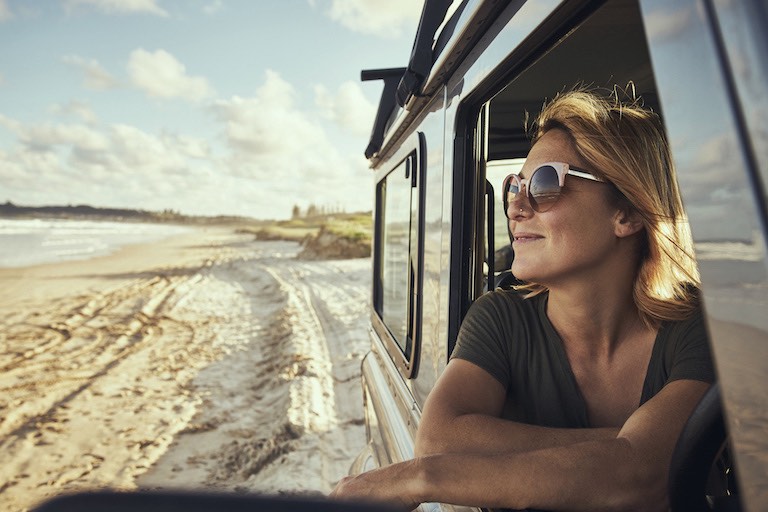
Revealed: Don’t break down on these Aussie roads
Australia’s worst road trip routes to break down on, according to the dataThe News
Ten classic road trip routes – predominantly in outback Western Australia, and the Northern Territory – have been identified as Aussie breakdown ‘danger zones,’ based on new data from car rental experts VroomVroomVroom.
The Key Details
- Study identifies and ranks most remote highway hotspots in Oz, which are considered classic road trip routes, by measuring distances from essential services
- Four Western Australian roads made up the top ten, followed by three from the Northern Territory, two from QLD and one route in both WA and SA
- The best advice is to ensure you pack your car for survival before embarking on a road trip or taking a route that takes you away from essential services
The Finer Details
Leading car hire comparison site VroomVroomVroom, has analysed the exact coordinates of Australia's most popular road trip roads and mapped them against all petrol stations, hospitals and mechanics in the area, outlining where the most isolated spots are to break down.
According to the data, the most hazardous spot in Australia is on WA’s Gunbarrel Highway.
Famous for its vast deserts, star gazing and sand dunes, this popular route, especially among 4WD enthusiasts, features Carnegie Station and Mount Beadell, with the 1,400-kilometre trip taking at least four days to complete safely.

However, the isolated terrain of the Gunbarrel Highway is unforgiving if things go wrong, with the data revealing that at its most isolated, the nearest hospital is just over 290km away, breakdown or repair services are over 448km away, and the distance to fuel is 211.20km.
This gives Gunbarrel Highway a breakdown danger zone index score of 267.45 and makes it the ‘most dangerous’ road in Australia to break down.

Coming in second is Tanami Road, which stretches across the Northern Territory and into WA, with breakdowns leaving drivers over 200km from help, 235km from a hospital, 300km from repair services, and 243m from fuel, with an index score of 249.60.
Meanwhile, Queensland’s Diamantina River Road (which had an index score of 178.49) and the Birdsville Developmental Road (164.84) both rank highly, placing travellers deep in outback country with limited support, and hundreds of kilometres away from rescue.


The complete top ten road trip danger zones:
- Gunbarrel Highway, WA - 267.45
- Tanami Road, NT - 249.60
- Diamantina River Road, Queensland - 178.49
- Lyndon-Minnie Creek Road - WA 169.86
- Birdsville Developmental Road - Queensland 166.84
- Sandover Highway, NT - 159.73
- Eyre Highway, WA-SA. 156.25
- Carnarvon Mullewa Road, WA - 152.20
- Goldfields Highway, WA - 150.43
- Carpentaria Highway, NT - 148.15
The Road Ahead
VroomVroomVroom CEO Mike Boyd, stresses that distances in the outback can surprise first-time travellers, which means packing supplies and being prepared is essential.
"You can drive for hours without seeing another town. Always pack extra water, food, and fuel if travelling long distances, it’s not just about comfort, it’s about safety," says Boyd.
"Bring a good map or GPS device, and don’t rely on your phone alone to get you where you need to go…Mobile coverage in remote Australia is patchy at best.”.
Bring a USB cable to charge your phone in the car, but more importantly, most modern cars support Apple CarPlay or Android Auto, allowing you to use Apple, Google Maps or Waze as your built-in navigation option.

Boyd also suggests planning your stops ahead of time and informing people of your plans.
“Plan ahead and know where you’ll stop for fuel or EV charging, lunch, or the best lookouts to take in the view along the way.”
“And always let a friend or family member know your route and when you expect to arrive. If something goes wrong, at least someone will raise the alarm, and help can be sent.”
Additionally, RACV Executive General Manager Insurance and Roadside Phil Turnbull suggests completing a safety checklist before heading off on any road trip, which includes:
- Test your car and get it serviced
- Prepare for weather and road conditions
- Plan your fuel and rest stops
- Update your emergency roadside assistance subscription
- Organise and clean your car inside and out
- Pack your emergency car safety kit
Related: Costly living pressures putting families in danger on our roads
Related: How to drive safely on dirt roads
Related: Five major road hazards and how to avoid them


Please see our Editorial Guidelines & Code of Ethics (including for more information about sponsored content and paid events). The information published on this website is of a general nature only and doesn’t consider your particular circumstances or needs.














